hole
September 21st, 2008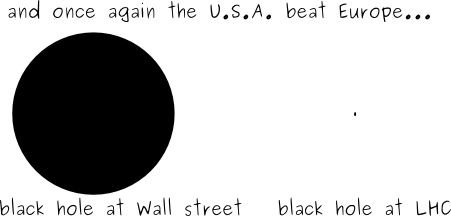
but the one at Wall street is said to cost estimated 900 to 1400 billion dollars at least so far while the LHC is only 4.6 to 9.2 billion dollars. I’d rather see scientists play with the money here…
randformblog on math, physics, art, and design |

but the one at Wall street is said to cost estimated 900 to 1400 billion dollars at least so far while the LHC is only 4.6 to 9.2 billion dollars. I’d rather see scientists play with the money here…
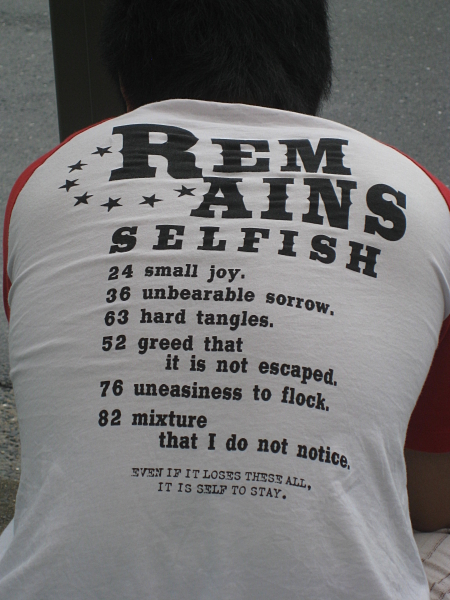
a bit strange humour froma shirt company
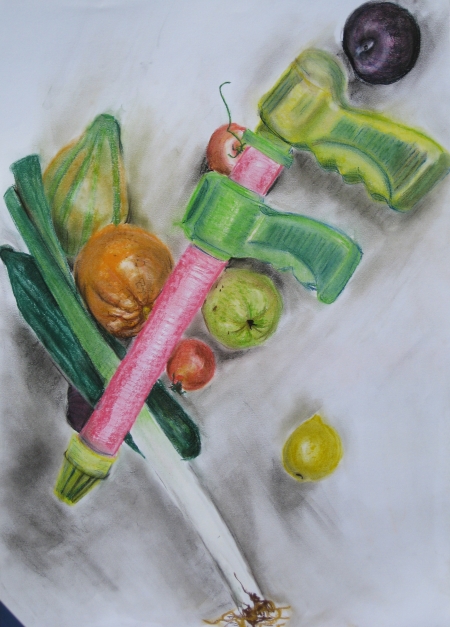
The revelation of revolting food: “Wer hat das schoenste Gemuese im Land?” pastell on paper, artwork by Matter Bahri
The recent (partially rather violent) food crisis has shed some light on the conflicts to be expected if resources are getting even scarcer.
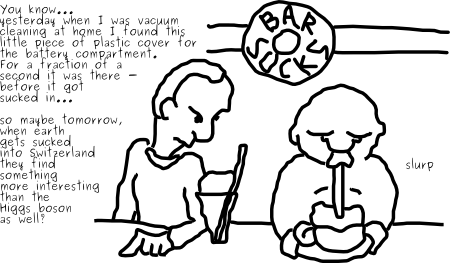
Due to a recent conference in the north of Japan I passed the airport of Aomori. It looked to me very much like 60/70/80-ties east german architecture.
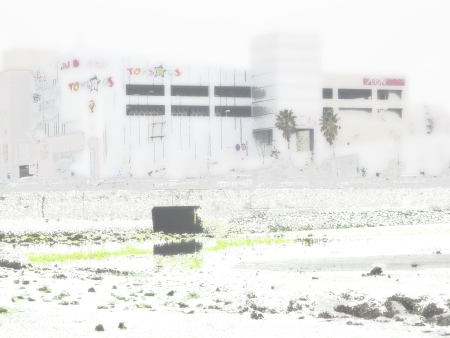
Hiroshima and Nagasaki, the two cities which suffered under a US nuclear attack are in the vicinity of Fukuoka (where the writers of this blog are currently located), so there are quite some people around here for whom these attacks are not just a scary story but bitter reality.
The bombs were a production of the Manhattan Project which was initiated by the fear that Nazi Germany could develop bombs of its own (which turned out wasn’t the case) and there were plans to throw nuclear bombs on Ludwigshafen, Mannheim and Berlin. Luckily Berlin capitulated early enough! If this wouldnt have been the case you probably wouldnt read this blog, as both of my parents were in Berlin in wartimes (with a few exceptions: my father and his mother (a single mom) were evacuated to Bavaria for a short time and my mother and her mother went on a trip to get the mother of my grandmother (whose husband died already in the first world war) out of Poland)
Among the targets of the US bombs were the Mitsubishi Steel and Arms Works and it is a strange coincidence that right this company is currently developing Japans new fast breeder at Monju (partially in collaboration with russia). At this point one should repeat that fast breeders bear a high proliferation risk.
The old fast breeder in Monju was closed in 1995 following a serious sodium leak (which was luckily not radioactive like this leak) and fire. It is expected to reopen in 2008.
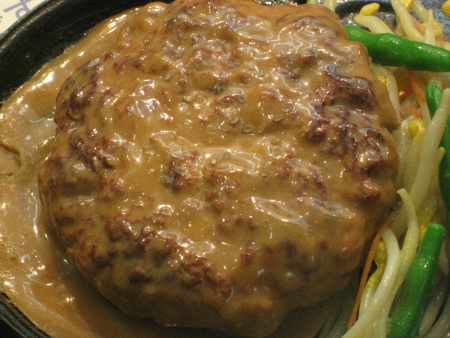
In a link in this randform post about food among others the issue of obesity versus hunger was mentioned.
I am not so sure wether this comparision was really helpful in this context. As a matter of fact in western countries it is often the poor who have obesity problems. First a diet which is high on carbonhydrates, fat and sugar is often simply cheaper than a high quality fresh (organic) vegetable/low fat diet. Secondly even if you could replace a bad fat meal with simple and low cost but good ingrediences, this often requires a certain degree of diet education and awareness. In particular everybody who finally managed successfully to get rid of the extra load due to excessive heavy calories should be dearned cautious to put on new ones. But this is usually a long and not so easy learning process.
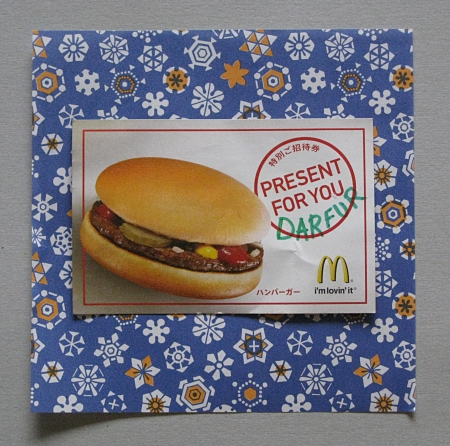
And as it seems for example in the US it is rather that people are lured into an unhealthy food consumption. It is especially the children, which are defenselessly exposed to subtle marketing methods.
According to a study Food and beverage companies spent $1.62 billion to market their products to children in 2006. The FTC study was requested by Congress in response to growing concern about childhood obesity in the United States. The study, did not look directly at the possible link between food and beverage advertising to kids and childhood obesity, but to assume that such a link exists is definitely not too far fetched, a more detailled distinction between advertisements for healthy nutrition versus fast food/soft drinks etc. will give more information.
Over here in Japan the advertisement of food in restaurants is especially interesting to observe. Restaurant/food stands meals are usually modelled in plastic, which looks like Fimo (please see images). This food modeling seems to be a kind of art form, may be similar to food fotography (which uses also often plastic). For me the meals look rather like some futuristc nano food, however given the sucess of this kind of advertisement it is obvious that people feel attracted to this plastic food simulation. Interesting question, why? Because this kind of food cant rott and smell badly?. Because colors and shininess are exagerated and thus better perceptible as a kind of 3D symbol?
after “read the rest of this entry” you can find an artwork by Franziska Assisi (Bosnia) called: “Fimo naschen mit nichtlichtartigem Beschleuni-GEAR”
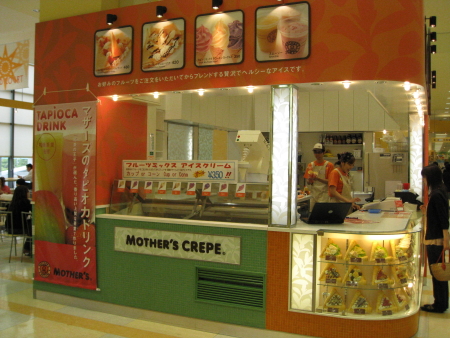
I currently have to refrain a bit from blogging as I am currently a bit busy with all sorts of stuff, like I just finished my class, I have to prepare for a geometry conference and to care about other general organisatorial stuff like such “nuisances” as that the electricity of our appartment was suddenly switched off. As everybody nows such “nuisances” can keep one pretty busy.
An anonymous reader was asking in a comment what the magazine “Siegessaeule” is. Since I wrote a bit more in the answer I decided to make it into a blog post.